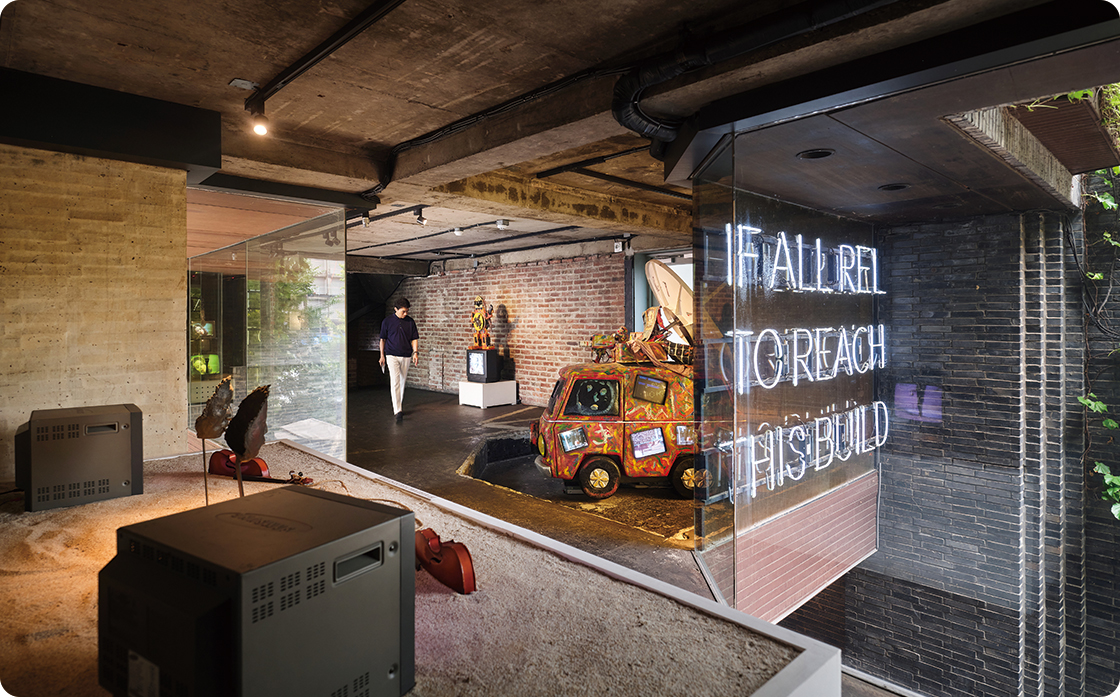ARARIO MUSEUM in SPACE, located next to Changdeokgung Palace in the heart of Seoul, is an art museum that blurs the boundaries between the traditional and the modern through wonder, novelty and fun. The mysterious mood here is sure to charm visitors.
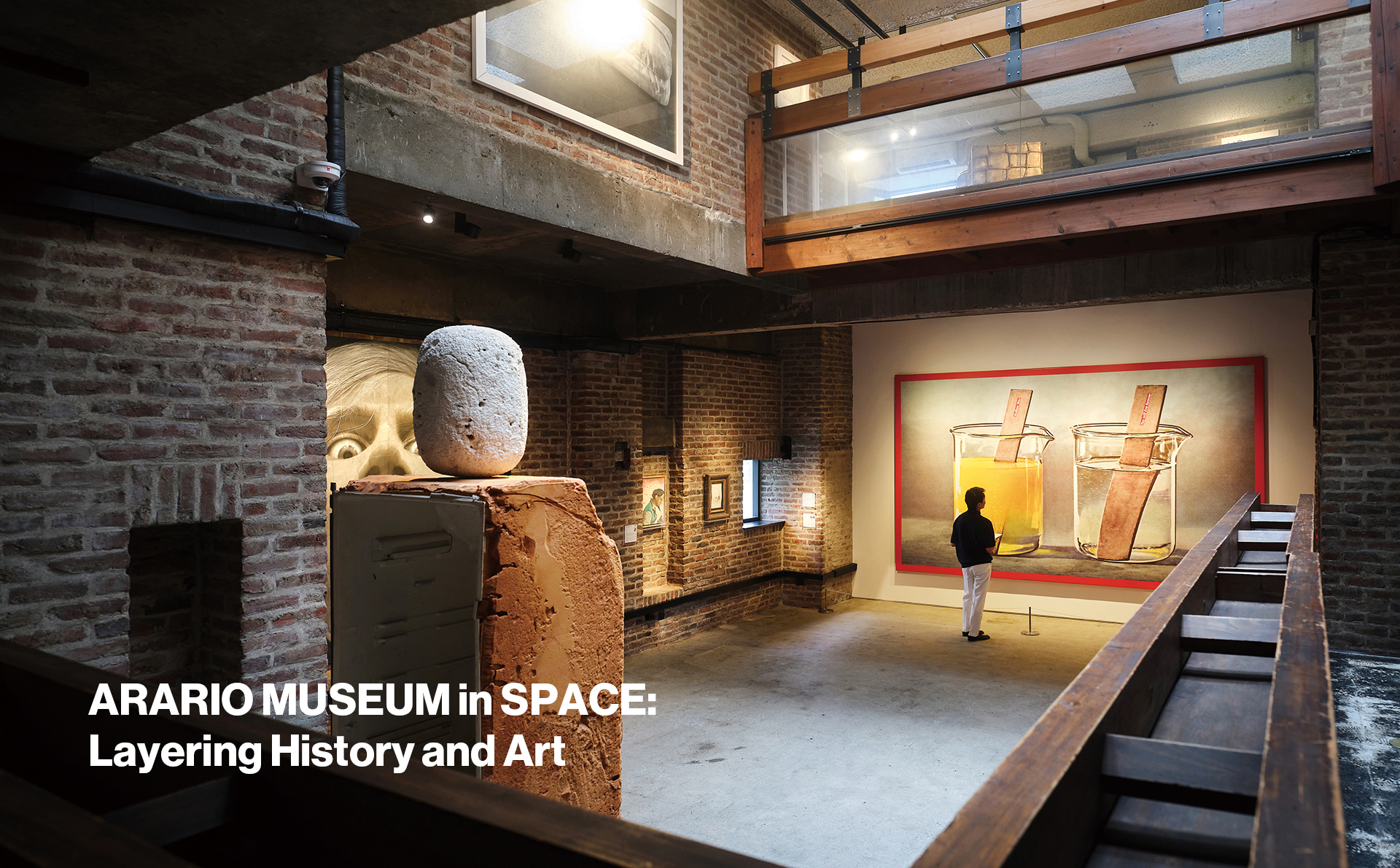
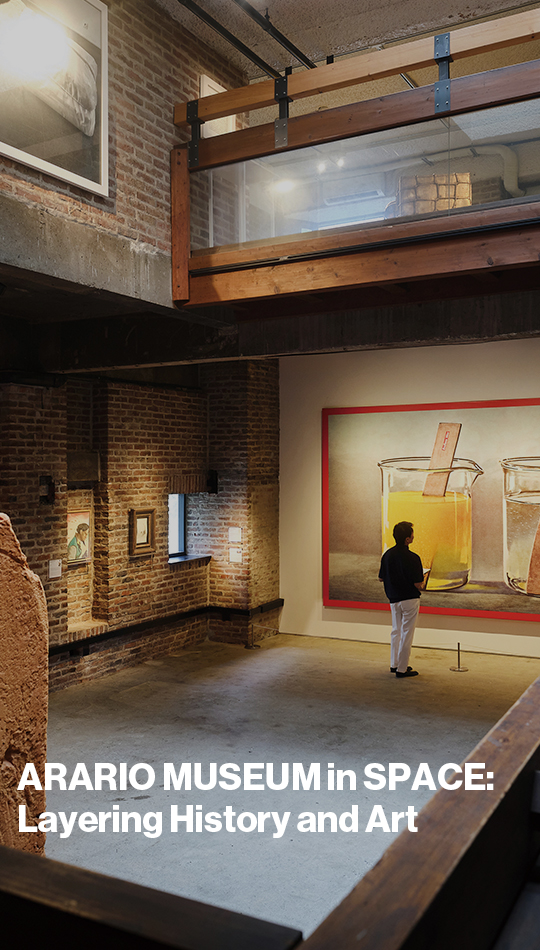
Writer. Kim Da Un
The Unity of Artwork and Venue
Walk east from Gwanghwamun toward Changdeokgung Palace for about 20 minutes, and you’ll find yourself at a place with a peculiar appeal. This is ARARIO MUSEUM in SPACE, a contemporary art museum. The museum complex consists of a modern building with a glazed façade, a Hanok (traditional Korean house) and an ivy-draped brick building. In the courtyard between them is a stone pagoda believed to date back to the Goryeo Dynasty. These buildings and artifacts, with their differing styles, produce the harmony of a collage.
After you pass through that striking courtyard and enter the ARARIO MUSEUM in SPACE, the atmosphere changes, and the air grows dark, as if a movie were about to be screened. That marks the beginning of the exhibition. The older building was designed by Kim Swoo-geun, one of Korea’s leading architects. It was initially constructed in 1971, with an expansion completed in 1977 as the office of the Space Group. It was designated as a national cultural heritage in 2014. The building reflects Korean traditional architecture’s particularities in its materials and form. It has been kept intact for its current function as a museum, making it feel like a piece of artwork.
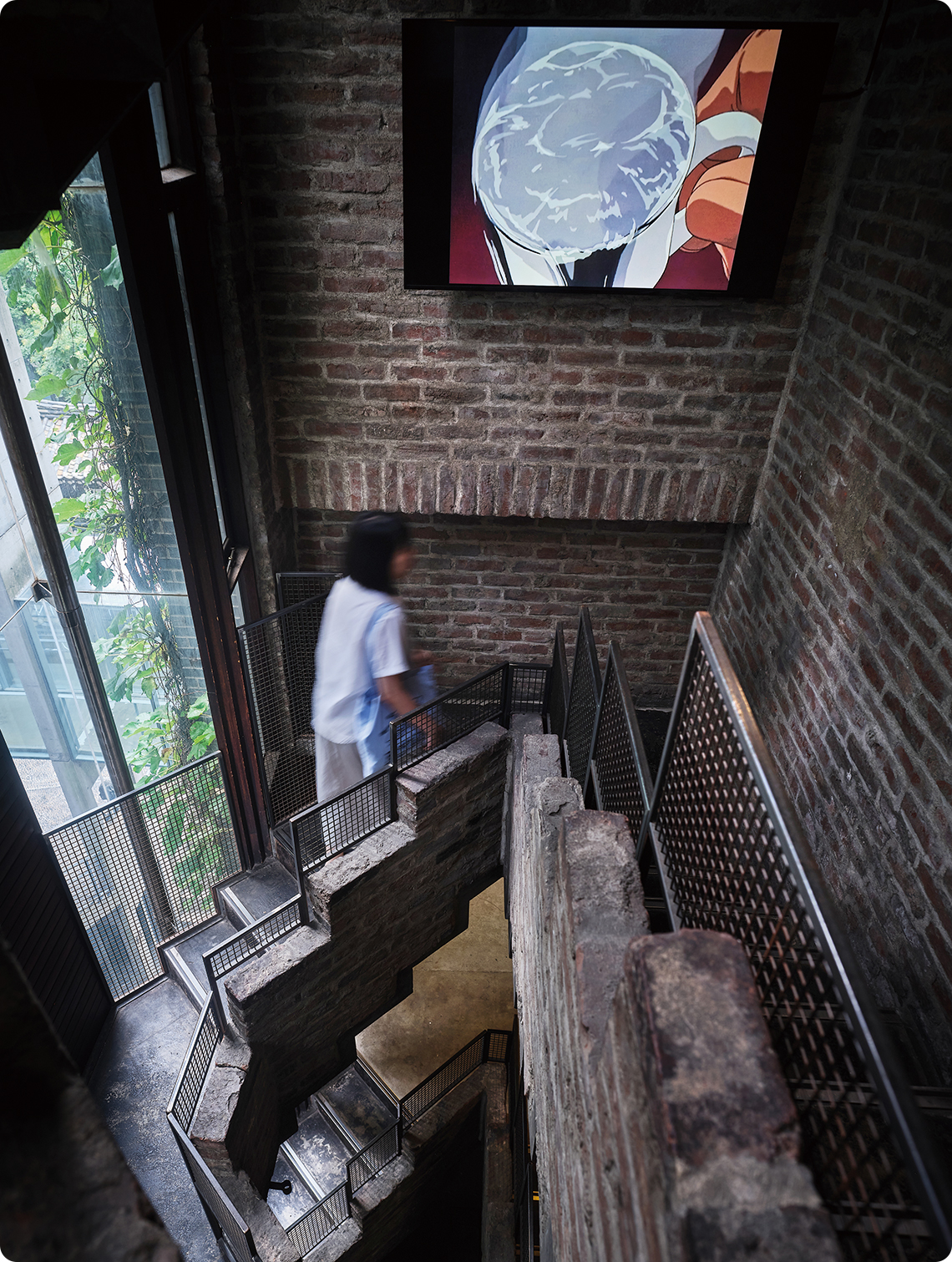 Yoon Hyangro, First Impression, 2014, single channel video, color, sound, 58 min 30 sec
Yoon Hyangro, First Impression, 2014, single channel video, color, sound, 58 min 30 sec
Passing along narrow corridors between red brick walls, you come to two striking staircases: one triangular, and the other circular, like the interior of a turret. Both staircases lead to spaces wildly different from a standard exhibition room. They are the unique sort of rooms you might expect to encounter in a miniature palace or a castle from a fairy tale. Peek inside to see how the works of a particular artist illuminate each of these rooms.
The various works of art combine with the space to create synergy. For example, a life-size model of an automobile by the artist Gwon Osang occupies a narrow space with a low ceiling, which enhances the piece’s visual weight. One of Nam June Paik’s distinctively artificial pieces is placed in front of a window, creating a charming contrast with the natural vista outside. In the same way, the sculptures of Marc Quinn are placed under powerful pin lights in a dark basement space to highlight the contrast. That setup plays up the mood of the artwork and encourages viewers to take a closer look at the details of the artwork. Another enjoyable viewing experience is provided by Li Qing, who treated a room in the museum as a building of its own and built his own house inside it.
New artwork awaits visitors in the basement, the site of special exhibitions held periodically. The current special exhibition is called “Eclipse,” an evocative collection of massive paintings spanning the walls and sculptures portraying figures from folk tales and mythology. The space was previously used as a small theater that hosted experimental works of drama. Consequently, the various installations can be seen from above, as if from the audience seating, or from below, as if from the stage. The exhibition even extends into a small space that formerly served as the green room. Browsing the space feels like taking a tour of contemporary art.
As you let your instincts guide you through the museum, you will stumble upon other pieces of interest. As part of the collection of Ci Kim (the pen name of museum owner Kim Chang-il), there are pieces by some of Korea’s best-known artists, including Kim Soun-Gui, Chang Woon Sang, Kim Beom, Lee Sang-beom and Kang Tae-sung. They are paired with world-class international artists of the likes of Keith Haring, Barbara Kruger, Cindy Sherman and Tatsuo Miyajima. The featured artwork covers a diverse range of periods and genres, including installation, photography, video, fabric and neon signs. So wherever you step foot, enjoyable and enlightening discoveries abound.
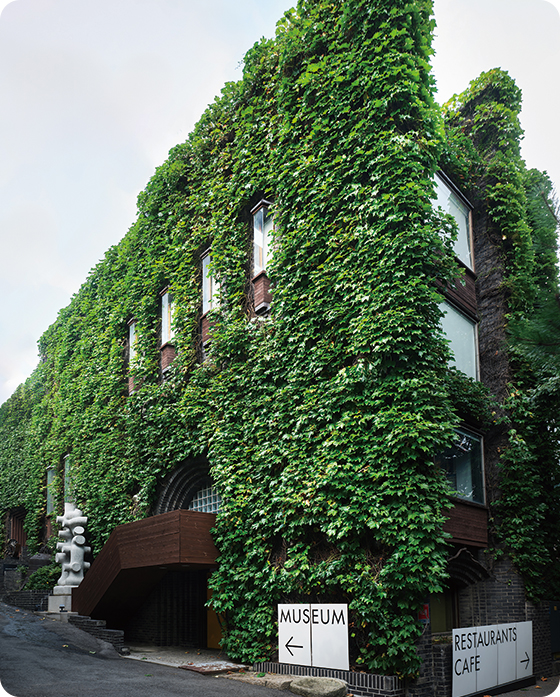 The exterior of the ARARIO MUSEUM in SPACE covered with vines
The exterior of the ARARIO MUSEUM in SPACE covered with vines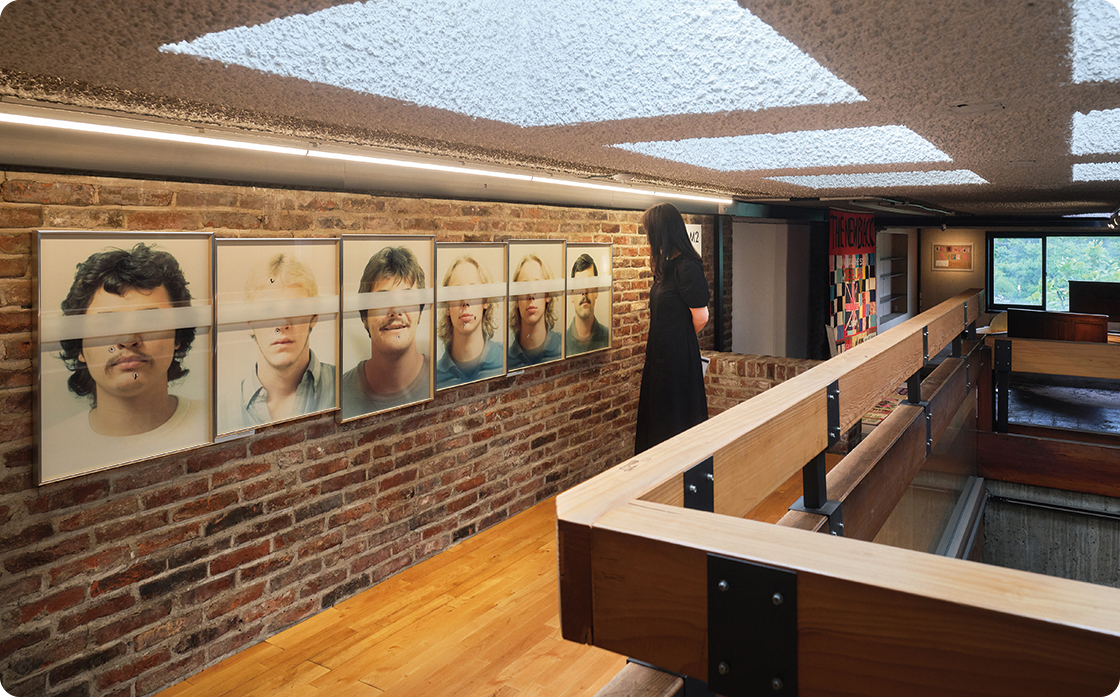 Sohie Calle, Coeur de Cible/Target, 2003
Sohie Calle, Coeur de Cible/Target, 2003Life in Art
The museum offers a splendid blend of artwork and exhibition spaces, but the exhibitions are not the only draw here. Many other attractions appear in the new glass building designed by Jang Seyang, the second director of Space after Kim Swoo-geun, the architect behind the old building that houses the ARARIO MUSEUM in SPACE today.
The most notable thing, of course, is that the ARARIO GALLERY, a commercial gallery featuring Korea’s leading artists, shares space with the museum. The ARARIO GALLERY has been blazing a trail for Korea’s contemporary artistic community with its bold approach to planning exhibitions and discovering artists. Since the pieces displayed at the gallery are in regular rotation, it’s recommended that you head over to the gallery after viewing the pieces in the museum.
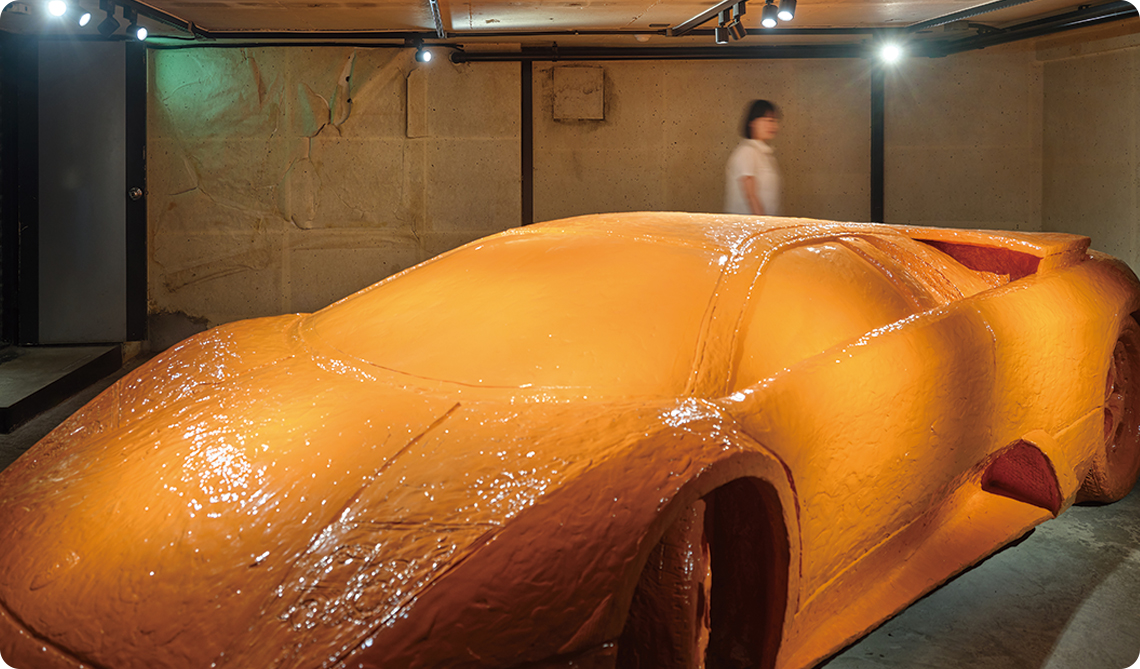 Gwon Osang, The Sculpture II, 2005, Painted bronze, 220x462x113 cm
Gwon Osang, The Sculpture II, 2005, Painted bronze, 220x462x113 cm
Importantly, contemporary art isn’t the only thing to be found on the premises. There are also various food and beverage options here, including a cafe space and dining across the five floors of the new building under the theme “Life in Art.” There’s a cafe serving coffee and pastries on the first floor and a dining spot inside the Hanok in the courtyard. Head to the second floor for a dessert shop featuring Korean-style confections and bingsu (shaved ice). And don’t miss the French restaurant on the third and fourth floors and the gourmet Korean restaurant on the fifth floor.
Since the new building has a glass façade, it offers a spectacular panorama of the old building designed in the 1970s, Changdeokgung Palace, and the pagoda and Hanok in the ARARIO courtyard. For the same reason, viewers of the old building can see the dizzying cityscape of Seoul through the glass walls just as they could before the new building went up.
With architectural history and contemporary art to admire and a smorgasbord of treats and beverages to savor, ARARIO MUSEUM in SPACE is as delightful as a surprise gift. Simply stepping foot inside gives you an opportunity to experience the wide range of cultures available today.
